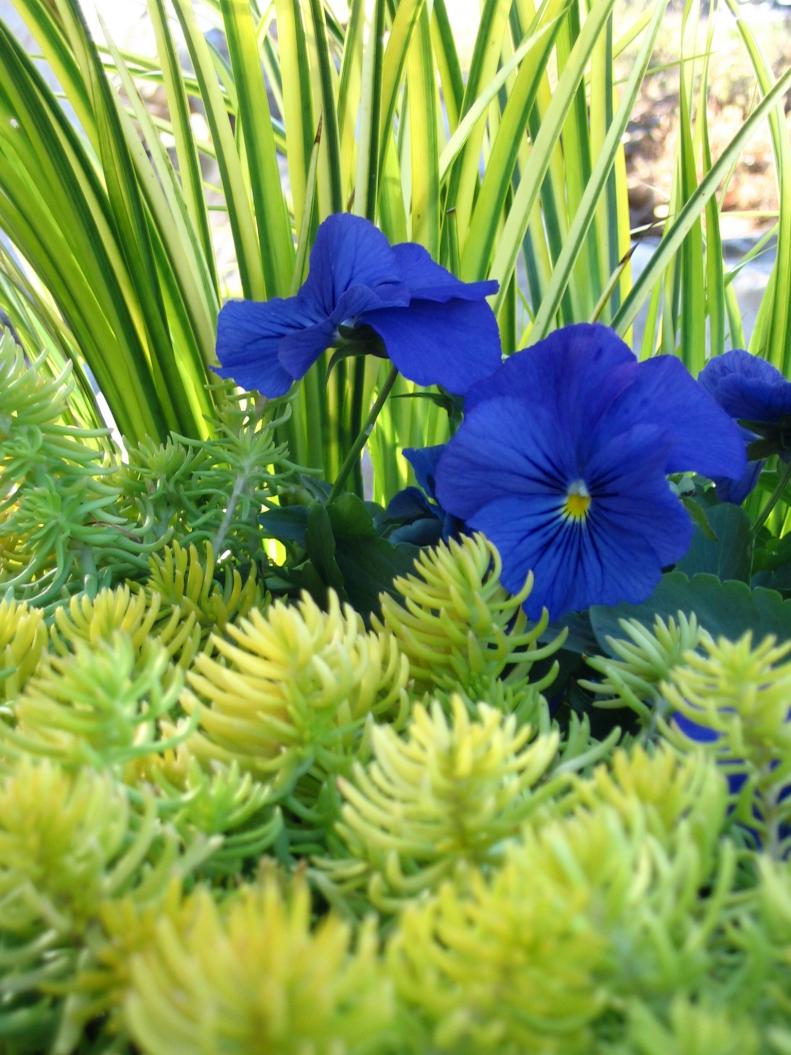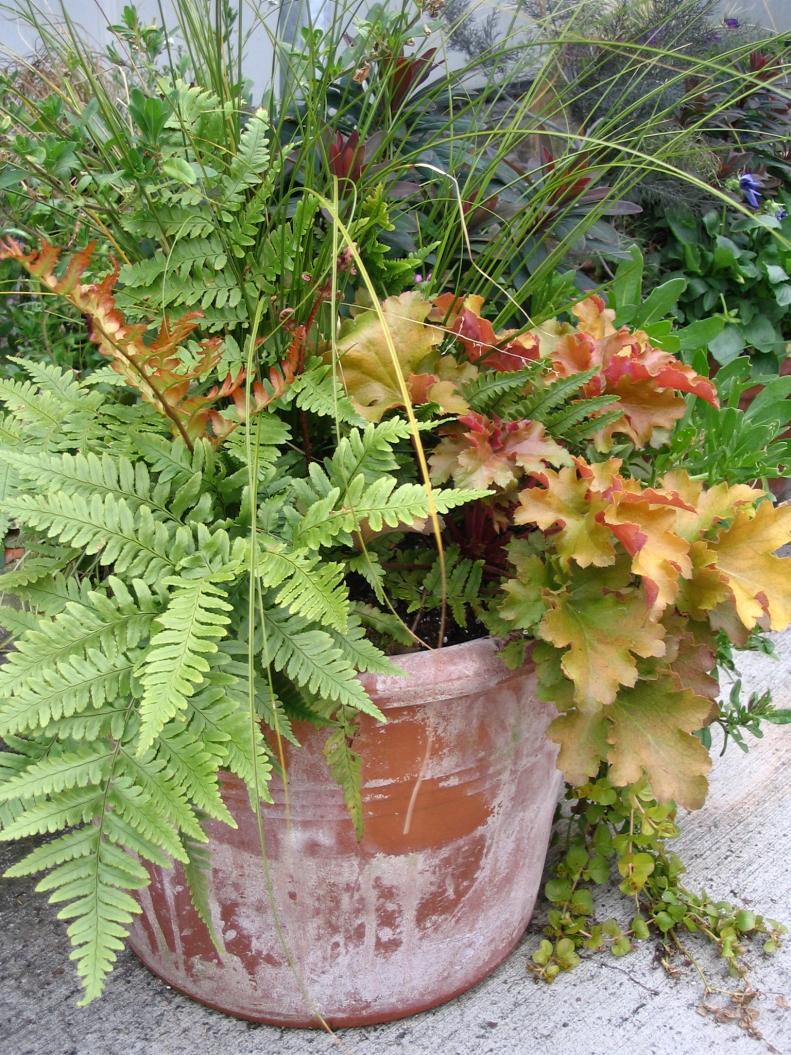1 / 9
Photo: Swansons Nursery
Spicy Hot
The winter-red foliage of heavenly bamboo (Nandina domestica) accompanies Heuchera 'Amber Waves' (USDA Zones 4 to 9) and Sedum 'Angelina' (hardy to Zone 3). The pastel pink and yellow pansy mix helps tie the other plants together. 'Amber Waves' is valued for its amber-colored foliage with rose undersides, which is virtually evergreen in warmer climates. Its ability to remain evergreen and hold its color in colder climates depends on the severity of cold temperatures. Hardy to USDA Zone 6, the nandina is the least cold-tolerant of the grouping.









